As an anesthesiologist, I am a physician who cares for patients when they are most vulnerable. Under anesthesia, no one is able to call for help. Every day patients have surgery in operating rooms all over the world, and it is the job of the physician anesthesiologist to watch over them, monitor their bodies’ responses to stress, breathe for them, provide them with pain relief, and fight for them when unexpected crises occur. It is my job to calm the fears of my patients and families, listen to their requests, manage their expectations, and develop a plan that will provide them with the best outcome after surgery.
My belief in this connection between physicians, patients, and families as an anesthesiologist stretches into my administrative roles as well. As Chief of the Anesthesiology and Perioperative Care Service and Associate Chief of Staff for Inpatient Surgical Services at the VA Palo Alto Health Care System (VAPAHCS), I am grateful for the opportunity to work with an incredible team of physicians, respiratory therapists, surgeons, advanced practice providers, technicians, and administrative staff members who are focused on our mission to provide the highest quality Veteran-centered care by leading, educating, and innovating in anesthesiology and perioperative medicine.
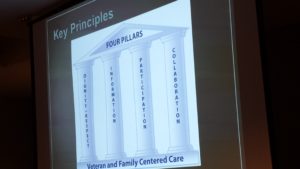 In order to accomplish this mission, we need the best information available to guide our decisions and a diversity of perspectives to enhance our ability to train new clinicians and explore relevant research questions. We have been fortunate to partner with our friends and colleagues in the Veteran and Family Advisory Council (VFAC) on a number of exciting projects. First, our Service manages the simulation center at VAPAHCS and is responsible for coordinating simulation-based training for all clinicians. Members of VFAC have been directly involved in simulation activities, even taking on active roles as the patient or family member in standardized training scenarios, to help us educate clinicians from various disciplines and all training levels. Debriefing after these simulation exercises gives our clinical trainees and practicing clinicians the unique perspective of real patients and family members which is essential to their professional development as modern medicine continues to progress towards a model of patient-centered care.
In order to accomplish this mission, we need the best information available to guide our decisions and a diversity of perspectives to enhance our ability to train new clinicians and explore relevant research questions. We have been fortunate to partner with our friends and colleagues in the Veteran and Family Advisory Council (VFAC) on a number of exciting projects. First, our Service manages the simulation center at VAPAHCS and is responsible for coordinating simulation-based training for all clinicians. Members of VFAC have been directly involved in simulation activities, even taking on active roles as the patient or family member in standardized training scenarios, to help us educate clinicians from various disciplines and all training levels. Debriefing after these simulation exercises gives our clinical trainees and practicing clinicians the unique perspective of real patients and family members which is essential to their professional development as modern medicine continues to progress towards a model of patient-centered care.
 Once a year, our Service organizes a faculty development retreat during which we reassess our mission, vision, strategic priorities, and tactics and work on one or two big ideas. Two years ago in 2015, we invited our VFAC partners to join us at our annual retreat to brainstorm improvement ideas related to patient-centered care in the perioperative environment, intensive care unit, and pain management. The general theme of the retreat addressed public perception and professional reputation of anesthesiologists and the specialty of anesthesiology. Having members of VFAC present at the retreat to share their knowledge, opinions, and questions has inspired a few subsequent improvement activities and other projects to enhance the range of services that we provide to our patients and their families.
Once a year, our Service organizes a faculty development retreat during which we reassess our mission, vision, strategic priorities, and tactics and work on one or two big ideas. Two years ago in 2015, we invited our VFAC partners to join us at our annual retreat to brainstorm improvement ideas related to patient-centered care in the perioperative environment, intensive care unit, and pain management. The general theme of the retreat addressed public perception and professional reputation of anesthesiologists and the specialty of anesthesiology. Having members of VFAC present at the retreat to share their knowledge, opinions, and questions has inspired a few subsequent improvement activities and other projects to enhance the range of services that we provide to our patients and their families.
Finally, working together with VFAC, and knowing members personally, has allowed our clinical Service to solicit feedback on a regular basis. Not all hospitals enjoy the level of access to a community of engaged patients and families like we do at VAPAHCS. When we revised our preoperative education materials for patients, we went to VFAC for input. When we were critically reviewing our website to update our online patient educational materials on anesthesia and perioperative care, we presented at the VFAC meeting to get the members’ feedback and suggestions. With their help, we have been able to improve the accessibility and readability of our online content and provide our patients and their families with useful information that can help prepare them for surgery.
We are very grateful to VFAC for its priceless contributions to our healthcare system, our patients, and our Service. We look forward to continued collaboration on future projects!
This blog has also appeared as a featured story on the VA Palo Alto Health Care System website.
Facebook
LinkedIn
Pinterest
E-mail
Related Posts:
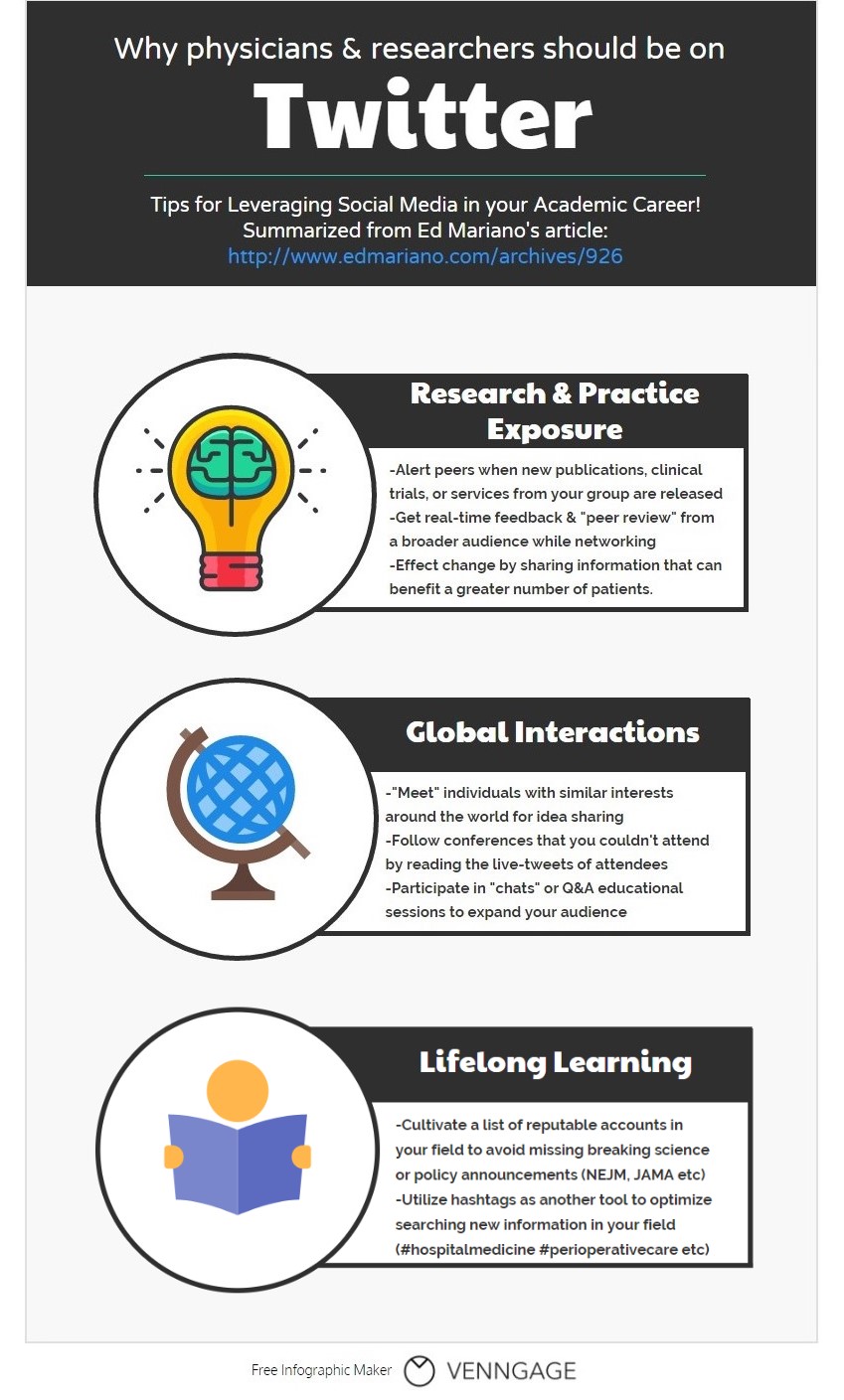 If you still need more convincing, this article may help. Join the healthcare social media (#hcsm) movement!
If you still need more convincing, this article may help. Join the healthcare social media (#hcsm) movement!




 Once a year, our Service organizes a faculty development retreat during which we reassess our mission, vision, strategic priorities, and tactics and work on one or two big ideas. Two years ago in 2015, we invited our VFAC partners to join us at
Once a year, our Service organizes a faculty development retreat during which we reassess our mission, vision, strategic priorities, and tactics and work on one or two big ideas. Two years ago in 2015, we invited our VFAC partners to join us at 
 Live tweeting during a scientific conference offers many benefits. For attendees at the meeting, it allows sharing of learning points from multiple concurrent sessions. This also decreases the incidence of “FOMO (Fear of Missing Out)” since you can only be in one session at any given time but can learn vicariously through others. For your Twitter community outside the meeting venue, your live tweeting can help to disseminate the key messages from the conference to a broader audience and ultimately may facilitate changes in clinical practice.
Live tweeting during a scientific conference offers many benefits. For attendees at the meeting, it allows sharing of learning points from multiple concurrent sessions. This also decreases the incidence of “FOMO (Fear of Missing Out)” since you can only be in one session at any given time but can learn vicariously through others. For your Twitter community outside the meeting venue, your live tweeting can help to disseminate the key messages from the conference to a broader audience and ultimately may facilitate changes in clinical practice.
 Changing physician behavior is rarely easy, and studies show that it can take
Changing physician behavior is rarely easy, and studies show that it can take 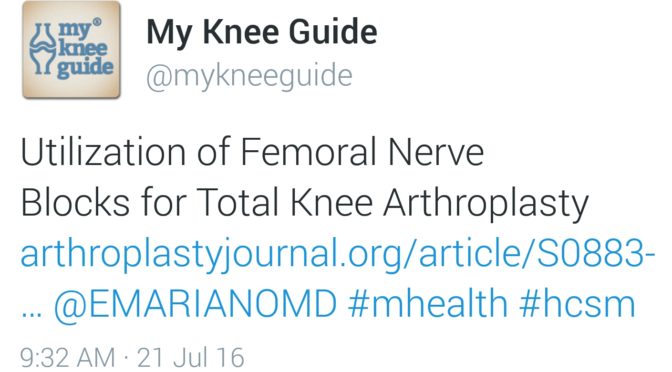

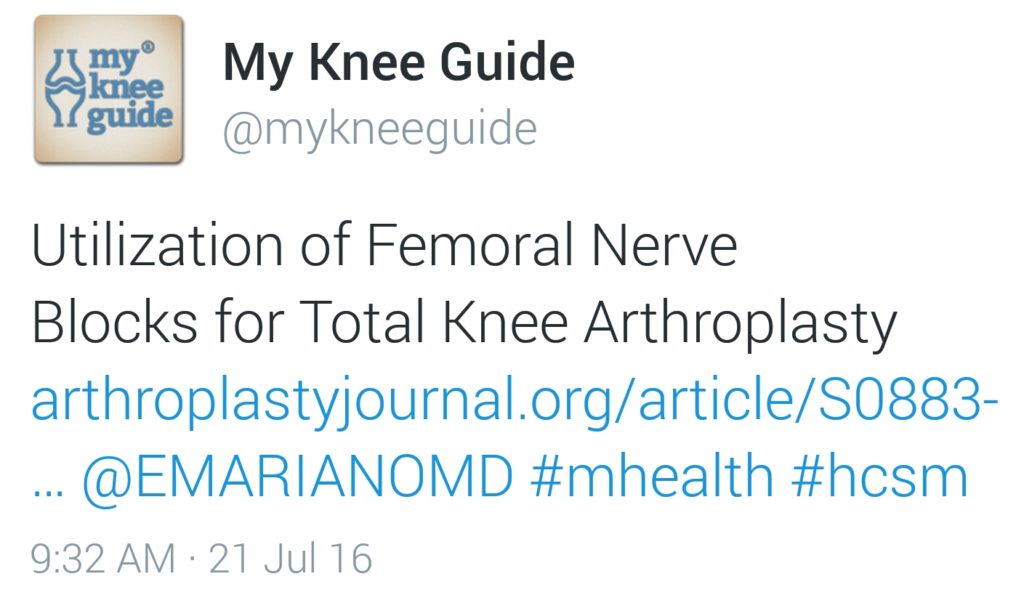
 Many people, even those who work in the operating room every day, take safe anesthesia care for granted. There has been growing pressure recently to abandon the team model and remove physician anesthesiologists’ supervision of nurse anesthetists with the latest threat coming from within
Many people, even those who work in the operating room every day, take safe anesthesia care for granted. There has been growing pressure recently to abandon the team model and remove physician anesthesiologists’ supervision of nurse anesthetists with the latest threat coming from within 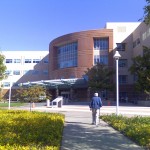 Healthcare around the world is changing. In the United States, healthcare reform has been focused on achieving the “triple aim” as described by Berwick (1). This
Healthcare around the world is changing. In the United States, healthcare reform has been focused on achieving the “triple aim” as described by Berwick (1). This  To date, anesthetic interventions focused on targeting acute pain have not demonstrated long-term functional benefits (12,13). Perhaps implementation of a PSH with better care coordination that includes individualized
To date, anesthetic interventions focused on targeting acute pain have not demonstrated long-term functional benefits (12,13). Perhaps implementation of a PSH with better care coordination that includes individualized 

